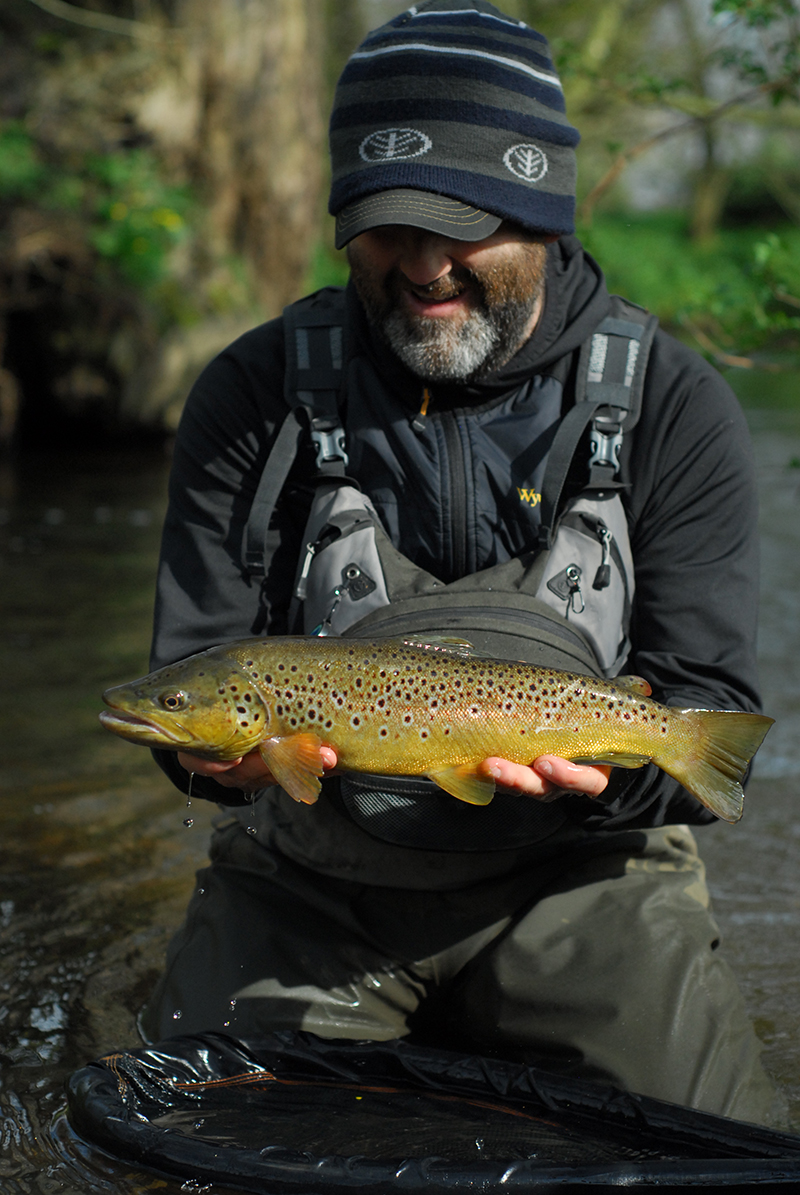River guru, Glen Pointon knows a thing or two about catching trout from running water so who were we to curb his enthusiasm when he writes about his favourite thing in the whole world - dry fly fishing!
I was talking to a good friend of mine the other day who has just taken up fly fishing through the winter and I put him in touch with fellow guide Andy Buckley as I don’t like to guide my friends. He was telling me Andy had been teaching him French nymphing and duo methods but then his voice started to get excited as he mentioned a fish that was taking off of the surface! Andy had quickly attached a dry fly, and in my friend's words; "As soon as it hit the water, the fish exploded and took his dry fly." My mates voice was buzzing with enthusiasm and after many years of dry fly fishing, I knew exactly how he felt!

We are few weeks off of the start of the trout season in Derbyshire which is open on the 17th March and I just can’t wait. So here are a few tips and tricks to hopefully give some anglers the edge on catching there the first trout on a dry fly.
In March we have a fly that hatches named the 'Large Dark Olive'. Without boring you with biology, this fly is surely my favourite throughout the whole season because it is very easy to copy as an artificial fly, due to its size and dark colours. It's also a fly that shows itself in a variety of weather conditions.
During the winter period the trout have been sulking in their holes and under roots, after an aggressive time spawning and with the change in temperature, they are now ready to feed again after losing a quite considerable amount of weight.
This is a big advantage for a 'stalking' dry fly trout angler as a hungry fish can be easy to locate and target. So my advice is to get out before the season starts and look for when the hatches start, as a rule, I have found it’s the warmest time of the day and hatches only last for around an hour maximum.
One of nature’s tricks is to look for wagtails. If they are on the wing and darting about you can be 100% certain a hatch is about to happen. The trout will visually see the nymphs ascending to the surface and will sway out of its home and start to ‘nymph’ around midwater. You won’t know this is going on at the time unless your fishing a gin clear river sighting them, but you can be assured, if you see the odd large dark olive cruising down the river or heading to the trees you know what is happening below the surface.
Some anglers would start to nymph fish with the weighted fly at this stage, but now is the time to be patient. There is a stage in the hatch where it’s more beneficial for the trout to get into a ‘food lane’, sitting inches away from the surface film and start to take the emerging and fully emerged large dark olives.
At this stage, you should be already in a position to present a fly to the rising trout. So your fly is tied on and you have peeled enough of your fly line out from your reel to make the cast. Now, wait and act like a Heron! Trout are one of the spookiest fish you will come across and a bad move can send the fish bolting for cover and ruin your chance.
You need to see the trout taking flys confidently and by this, I mean rising regularly. This is very important as when a trout is in this feeding mode it tends to show its weakness and drop its guard slightly.
Now here is my biggest tip in dry fly fishing that will increase your success rate throughout the season! When the targeted trout come up to take the natural fly you must immediately start your cast. Try for one back cast and shoot the fly into the same line as the naturals. This method is absolutely devastating on big wise spooky trout as when it rises to take the natural, it has lost its guard and a tippet or fly line landing near the fish will not spook it.
When the trout approaches your fly you need to stay calm at this point but this is something I can’t actually do or help you with! Steve Cullen and I have been so excited at times we have snatched the fly out of the fishes mouth or struck so hard and snapped the tippet! The method is to let the fish take the fly and drop its head then calmly set the hook. But I rarely manage this, as my heart goes into palpitations!
People have talked about the presentation of your fly for years and it’s very important but that’s a huge subject and one for my next article. My advice to newcomers is to land your fly 30cm to 100cm above the rising fish and it will eliminate many problems with drag in a lot of situations. As for flys to use you can’t go wrong with a CDC shuttle cock pattern, it’s a simple fly, but deadly in all situations.
One last point. Be wary of the size of the fly you are using, in Derbyshire our 'Large Dark Olives' are size 14/16 but over the border, in Wales, I have seen them as big as a size 12.
I hope some of this might help with your first dry fly trout of the new season and please leave any comments below and I will try to help you.

